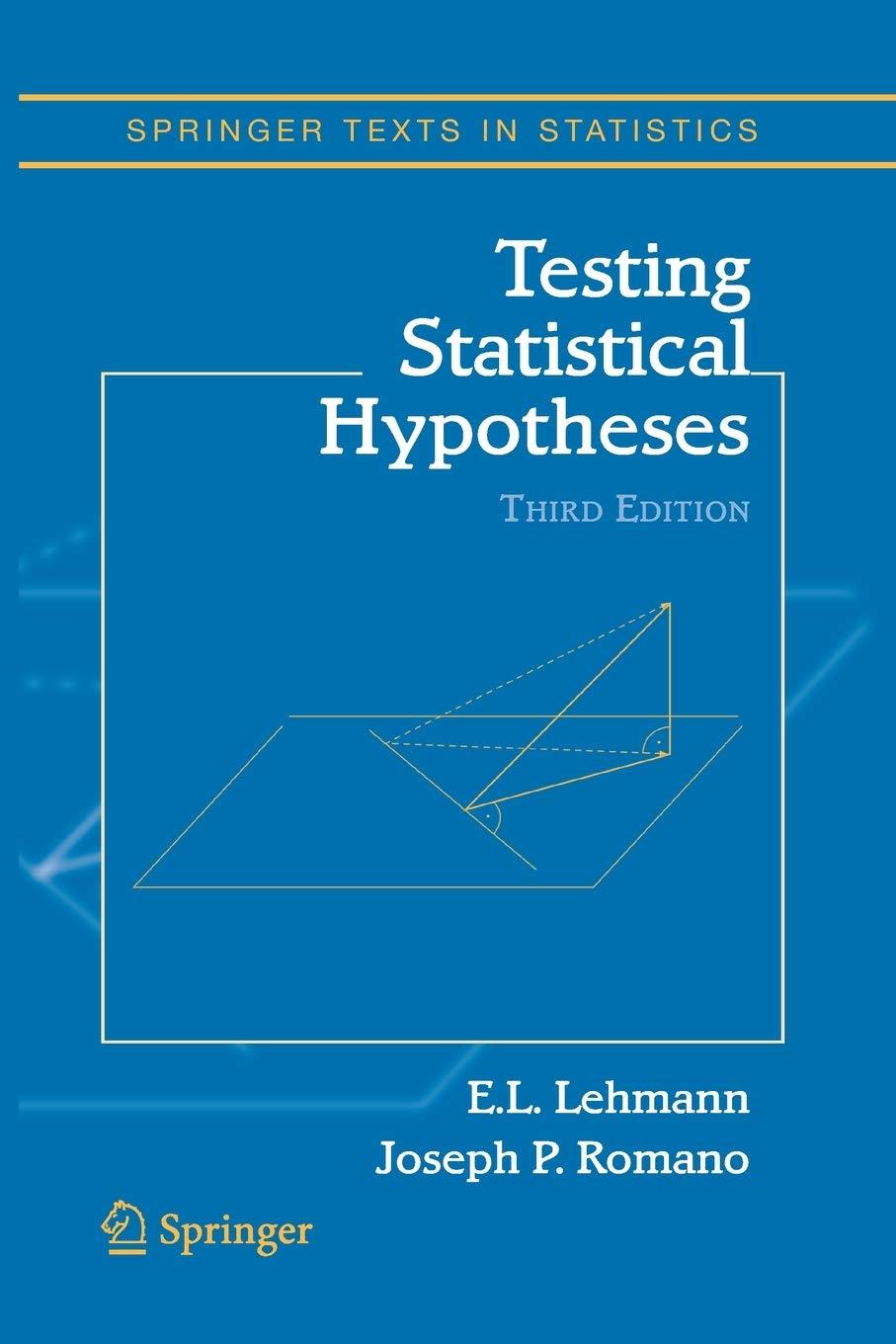The hypothesis of symmetry in a square two-way contingency table arises when one of the responses A1,...,Aa
Question:
The hypothesis of symmetry in a square two-way contingency table arises when one of the responses A1,...,Aa is observed for each of n subjects on two occasions (e.g. before and after some intervention). If Yi,j is the number of subjects whose responses on the two occasions are (Ai, Aj ), the joint distribution of the Yi,j is multinomial, with the probability of a subject response of (Ai, Aj )
denoted by pi,j . The hypothesis H of symmetry states that pi,j = pj,i for all i and j; that is, that the intervention has not changed the probabilities. Determine the likelihood ratio statistic for testing H, and specify its asymptotic distribution.
[Bowker (1948).]
Step by Step Answer:

Testing Statistical Hypotheses
ISBN: 9781441931788
3rd Edition
Authors: Erich L. Lehmann, Joseph P. Romano






